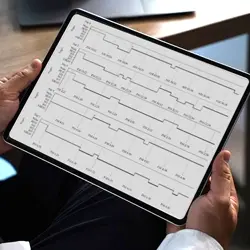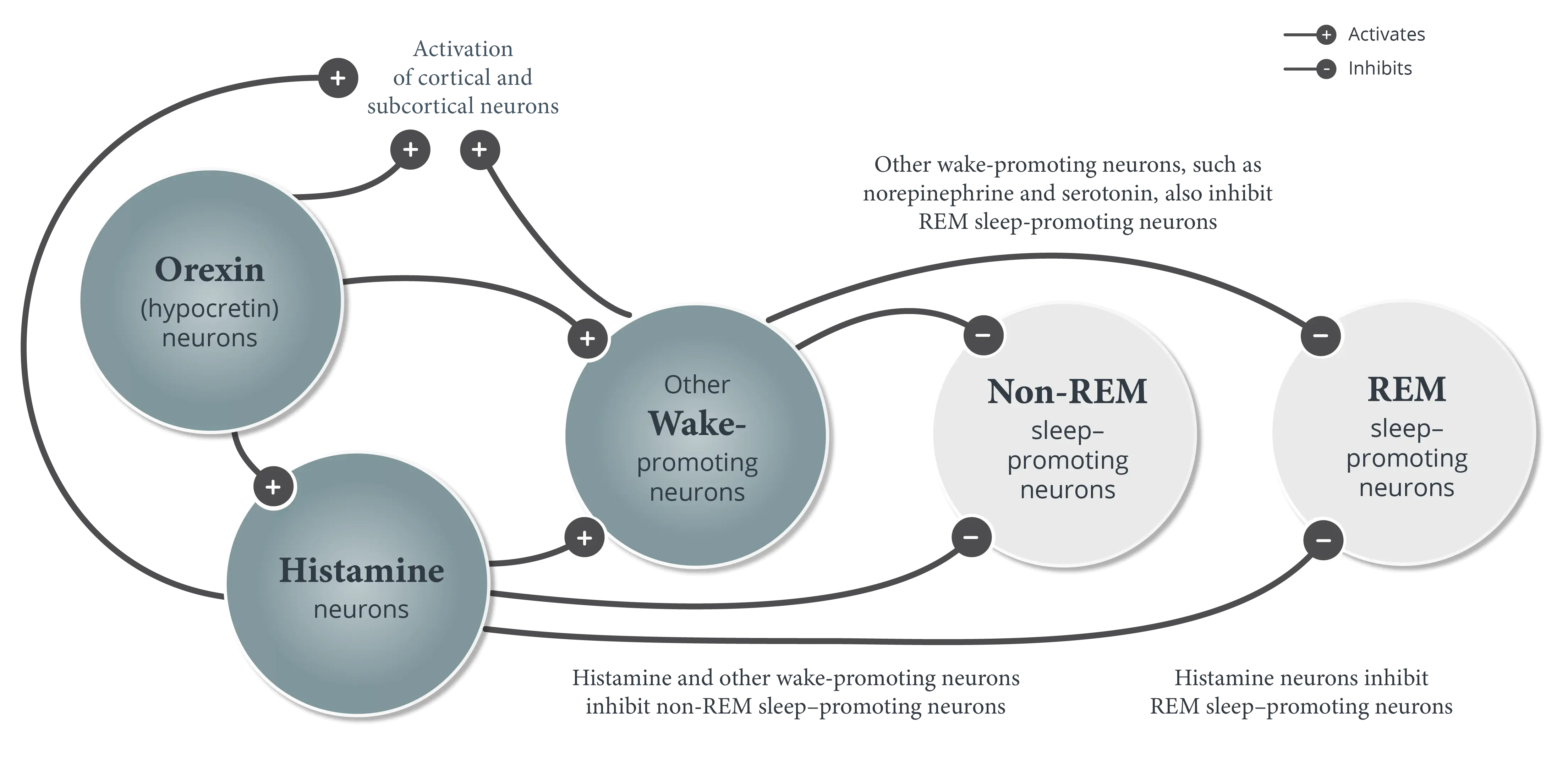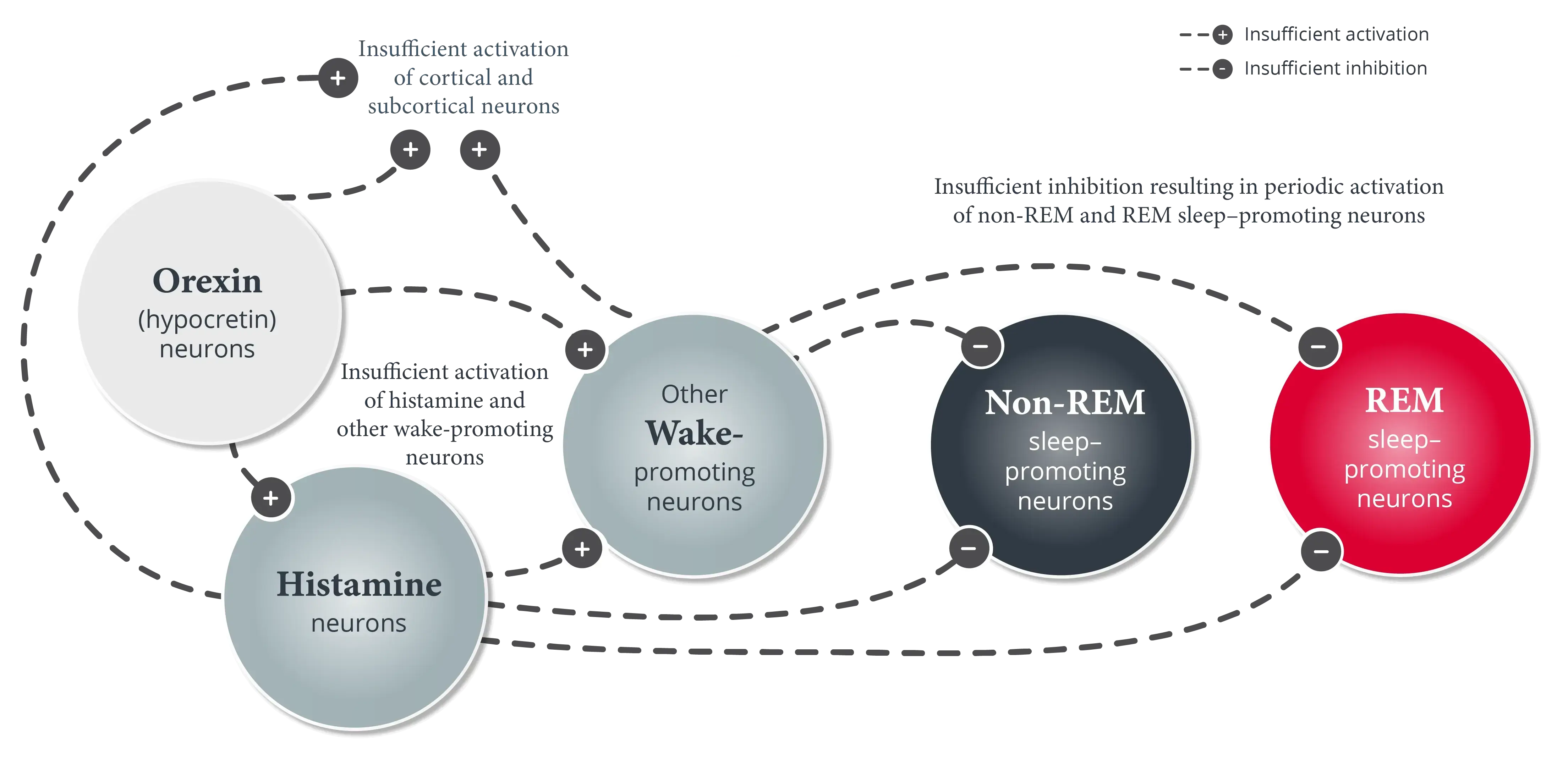

Impact of Narcolepsy in Adult Patients
This content was developed using the International Classification of Sleep Disorders, third edition, text revision (ICSD-3-TR) and other materials.
Impact of Narcolepsy in Adult Patients
This content was developed using the International Classification of Sleep Disorders, third edition, text revision (ICSD-3-TR) and other materials.
Overview
Narcolepsy can have a functional, psychological, and social impact on patients. Comorbidities in patients with narcolepsy can add to the impact of the disorder.1
According to the American Academy of Sleep Medicine (AASM), narcolepsy symptoms can impact patients’ ability to function properly in educational, social, and occupational settings.2
Excessive daytime sleepiness (EDS) can contribute to poor or inconsistent academic and occupational performance.1,3 People with narcolepsy have high rates of absenteeism due to irresistible sleepiness and are more likely to be unemployed, be dismissed from their jobs, or receive disability compensation.1,4,5 Cataplexy may pose a risk for injury, and many patients with narcolepsy limit driving to reduce their risk of being in an accident.4,6,7 They may also be afraid to cook or bathe for fear of falling asleep or being injured.5,6 A retrospective, observational study evaluating healthcare utilization in 9,312 patients (≥18 years) with a narcolepsy diagnosis compared with matched controls showed that those with a narcolepsy diagnosis were approximately twice as likely to visit the emergency department annually.8
In a 2013 survey of 1,699 people in the United States with self-reported narcolepsy, at least 40% of participants reported the following symptoms as having the most significant impact on their lives3:
- EDS
- Difficulty thinking, remembering, concentrating, or paying attention
- Cataplexy
- General fatigue/never feeling rested
The graphic below shows the most common activity limitations reported by patients. The percentages represent patients who feel that particular activity is limited by their narcolepsy.


In addition, patients with narcolepsy report feeling isolated, rejected, depressed, and anxious.1-3,9
Attention deficit/hyperactivity disorder (ADHD) symptoms are reported more frequently and at a greater severity in patients with narcolepsy compared to those without narcolepsy.10 Many patients with narcolepsy suffer from anxiety disorders, including social anxiety disorder, panic disorder, posttraumatic stress disorder, or agoraphobia.11-13 It is thought that these disorders could evolve as a result of the debilitating nature of narcolepsy, but evidence suggests narcolepsy may share a pathophysiologic link with psychiatric disorders.13-15
Patients with narcolepsy have a higher prevalence of comorbidities compared to those without narcolepsy; for example, a total of 43% are overweight.11,16 In addition, patients with narcolepsy are11:
- 4x more likely to have mood disorders
- 2.5x more likely to have anxiety
- 2x more likely to develop cardiovascular disease
- 1.8x more likely to develop diabetes
- 1.5x more likely to have high cholesterol
It may be difficult for patients to express the impact that narcolepsy and its symptoms have on their lives.13-17 These best practices for clinical interviews provide helpful tips for discussing symptoms and their impact with patients.
References
- Thorpy M, Morse AM. Reducing the clinical and socioeconomic burden of narcolepsy by earlier diagnosis and effective treatment. Sleep Med Clin. 2017;12(1):61-71.
- American Academy of Sleep Medicine. International Classification of Sleep Disorders. 3rd ed, text revision. American Academy of Sleep Medicine; 2023.
- Maski K, Steinhart E, Williams D, et al. Listening to the patient voice in narcolepsy: diagnostic delay, disease burden, and treatment efficacy. J Clin Sleep Med. 2017;13(3):419-425.
- Broughton R, Ghanem Q, Hishikawa Y, Sugita Y, Nevsimalova S, Roth B. Life effects of narcolepsy in 180 patients from North America, Asia and Europe compared to matched controls. Can J Neurol Sci. 1981;8(4):299-304.
- Daniels E, King MA, Smith IE, Shneerson JM. Health-related quality of life in narcolepsy. J Sleep Res. 2001;10(1):75-81.
- Overeem S, van Nues SJ, van der Zande WL, Donjacour CE, van Mierlo P, Lammers GJ. The clinical features of cataplexy: a questionnaire study in narcolepsy patients with and without hypocretin-1 deficiency. Sleep Med. 2011;12(1):12-18.
- Data on file. Harmony Biosciences.
- Black J, Reaven NL, Funk SE, et al. The Burden of Narcolepsy Disease (BOND) study: health-care utilization and cost findings. Sleep Med. 2014;15(5):522-529.
- Kapella MC, Berger BE, Vern BA, Vispute S, Prasad B, Carley DW. Health-related stigma as a determinant of functioning in young adults with narcolepsy. PLoS One. 2015;10(4):e0122478. doi:10.1371/journal.pone.0122478
- Filardi M, Pizza F, Tonetti L, Antelmi E, Natale V, Plazzi G. Attention impairments and ADHD symptoms in adult narcoleptic patients with and without hypocretin deficiency. PLoS One. 2017;12(8):e0182085. doi:10.1371/journal.pone.0182085
- Black J, Reaven NL, Funk SE, et al. Medical comorbidity in narcolepsy: findings from the Burden of Narcolepsy Disease (BOND) study. Sleep Med. 2017;33:13-18.
- Ohayon MM. Narcolepsy is complicated by high medical and psychiatric comorbidities: a comparison with the general population. Sleep Med. 2013;14(6):488-492.
- Overeem S, Reading P, Bassetti CL. Narcolepsy. Sleep Med Clin. 2012;7(2):263-281.
- Barateau L, Lopez R, Franchi JAM, Dauvilliers Y. Hypersomnolence, hypersomnia, and mood disorders. Curr Psychiatry Rep. 2017;19(2):13. doi:10.1007/s11920-017-0763-0
- Morse AM, Sanjeev K. Narcolepsy and psychiatric disorders: comorbidities or shared pathophysiology? Med Sci (Basel). 2018;6(1):16. doi:10.3390/medsci6010016
- Kok SW, Overeem S, Visscher TLS, et al. Hypocretin deficiency in narcoleptic humans is associated with abdominal obesity. Obes Res. 2003;11(9):1147-1154.
- Thorpy MJ, Dauvilliers Y. Clinical and practical considerations in the pharmacologic management of narcolepsy. Sleep Med. 2015;16(1):9-18.








